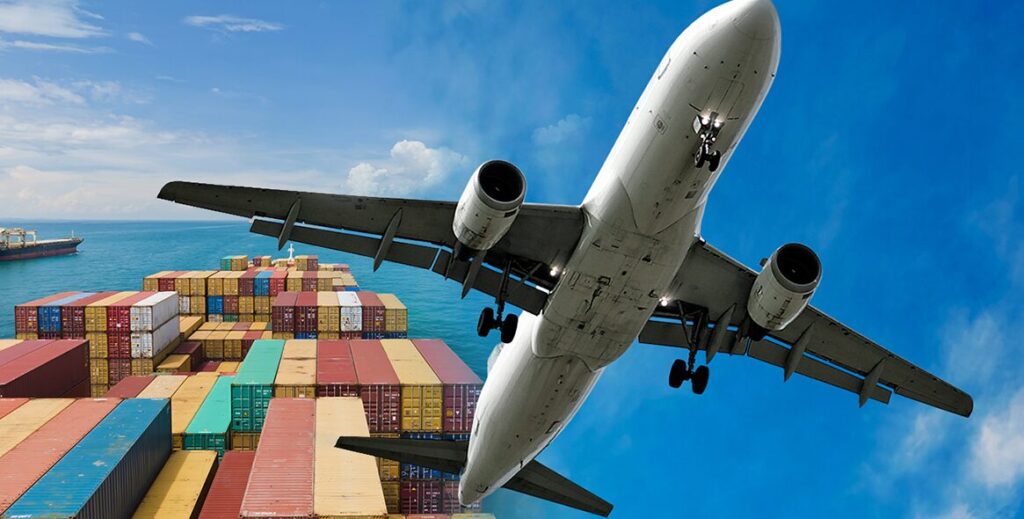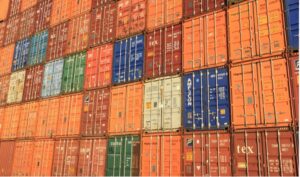Shipping from China to Slovenia can be a complex and challenging process, especially for new or inexperienced importers. There are many factors to consider, such as choosing the right shipping method, ensuring proper packaging and labeling, dealing with customs and import regulations, finding a reliable freight forwarder or shipping agent, tracking and monitoring your shipment, handling potential delays and issues during transit, and managing costs and budgeting for shipping expenses.
Understanding the common pitfalls in the shipping process

Shipping from China to Slovenia is not a simple task. There are many potential pitfalls that can cause problems, delays, or extra costs for your shipment. Some of the most common pitfalls are:
- Lack of communication: Communication is key when shipping from China to Slovenia. You need to communicate clearly and regularly with your supplier, your freight forwarder or shipping agent, and your customs broker. You also need to provide accurate and complete information about your shipment, such as the product description, quantity, weight, dimensions, value, origin, destination, and delivery terms. Any miscommunication or missing information can lead to misunderstandings, errors, or disputes that can affect your shipment.
- Poor quality control: Quality control is essential when shipping from China to Slovenia. You need to ensure that your products meet the quality standards and specifications that you agreed with your supplier. You also need to inspect your products before they are shipped, either by yourself, by a third-party inspection company, or by your freight forwarder or shipping agent. You should also request a pre-shipment inspection report from your supplier or inspector, which can serve as proof of the quality and condition of your products. Poor quality control can result in defective, damaged, or non-compliant products that can cause rejection, returns, or penalties from your customers or customs authorities.
- Incorrect or incomplete documentation: Documentation is crucial when shipping from China to Slovenia. You need to prepare and provide all the necessary documents that are required for your shipment, such as the commercial invoice, packing list, bill of lading, certificate of origin, certificate of conformity, and any other documents that may be required by your customers or customs authorities. You also need to ensure that your documents are correct, consistent, and complete, and that they match the information on your products and shipment. Any incorrect or incomplete documentation can cause delays, fines, or confiscation of your shipment by customs authorities.
- Unfamiliarity with customs and import regulations: Customs and import regulations are important when shipping from China to Slovenia. You need to be familiar with the customs and import regulations of both China and Slovenia, as well as any other countries that your shipment may transit through. You also need to comply with the rules and requirements of the customs and import authorities, such as paying the applicable duties and taxes, obtaining the necessary permits and licenses, and submitting the required declarations and documents. Any unfamiliarity or non-compliance with customs and import regulations can result in delays, penalties, or seizure of your shipment by customs authorities.
Choosing the right shipping method for your needs

Shipping from China to Slovenia can be done by different methods, such as sea freight, air freight, rail freight, or courier service. Each method has its own advantages and disadvantages, and you need to choose the one that best suits your needs, depending on factors such as the size, weight, value, urgency, and nature of your products and shipment. Here are some of the main characteristics and considerations of each method:
- Sea freight: Sea freight is the most common and cost-effective method of shipping from China to Slovenia. It is suitable for large, heavy, or bulky shipments that are not time-sensitive. Sea freight can take anywhere from 25 to 45 days to ship from China to Slovenia, depending on the port of origin, port of destination, and shipping route. Sea freight also requires more documentation and procedures than other methods, and it is subject to various risks and uncertainties, such as weather, congestion, strikes, or piracy. Sea freight can be done by full container load (FCL) or less than container load (LCL), depending on the volume of your shipment. FCL is cheaper and faster than LCL, but it requires a minimum of 15 cubic meters of space. LCL is more flexible and convenient than FCL, but it is more expensive and slower, and it involves more handling and consolidation of your shipment with other shippers’ cargo.
- Air freight: Air freight is the fastest and most reliable method of shipping from China to Slovenia. It is suitable for small, light, or valuable shipments that are time-sensitive or perishable. Air freight can take anywhere from 3 to 7 days to ship from China to Slovenia, depending on the airport of origin, airport of destination, and flight schedule. Air freight also requires less documentation and procedures than sea freight, and it is less affected by external factors, such as weather, congestion, strikes, or piracy. However, air freight is also the most expensive method of shipping from China to Slovenia, and it is subject to strict weight and size limitations, as well as security and safety regulations. Air freight can be done by express or economy service, depending on the urgency and budget of your shipment. Express service is faster and more convenient than economy service, but it is also more expensive and has less availability of space and routes.
- Rail freight: Rail freight is a relatively new and emerging method of shipping from China to Slovenia. It is suitable for medium-sized, moderate-weight, or non-urgent shipments that are not suitable for sea freight or air freight. Rail freight can take anywhere from 15 to 25 days to ship from China to Slovenia, depending on the rail station of origin, rail station of destination, and rail route. Rail freight also requires less documentation and procedures than sea freight, and it is more environmentally friendly and secure than other methods. However, rail freight is also more limited and unpredictable than other methods, and it is subject to various challenges and constraints, such as infrastructure, capacity, connectivity, or regulation. Rail freight can be done by block train or single wagon, depending on the availability and demand of your shipment. Block train is cheaper and faster than single wagon, but it requires a minimum of 15 to 20 TEUs of space. Single wagon is more flexible and accessible than block train, but it is more expensive and slower, and it involves more transshipment and handling of your shipment along the way.
- Courier service: Courier service is a convenient and hassle-free method of shipping from China to Slovenia. It is suitable for very small, light, or urgent shipments that are not worth the cost or time of other methods. Courier service can take anywhere from 1 to 5 days to ship from China to Slovenia, depending on the courier company, service level, and delivery address. Courier service also requires the least documentation and procedures of all methods, and it provides door-to-door delivery and tracking of your shipment. However, courier service is also the most restricted and regulated method of shipping from China to Slovenia, and it is subject to high duties and taxes, as well as low weight and size limitations, as well as security and safety regulations. Courier service can be done by international or domestic courier companies, depending on the coverage and reputation of your shipment. International courier companies are more reliable and professional than domestic courier companies, but they are also more expensive and have less flexibility and customization of service.
Ensuring proper packaging and labeling

Packaging and labeling are essential when shipping from China to Slovenia. You need to ensure that your products are properly packaged and labeled, in order to protect them from damage, loss, or theft during transit, as well as to facilitate their identification, handling, and delivery. Here are some of the main tips and best practices for packaging and labeling your shipment:
- Use appropriate packaging materials: You should use packaging materials that are suitable for the type, size, weight, and nature of your products and shipment. You should also use packaging materials that are durable, sturdy, and resistant to moisture, temperature, pressure, or impact. Some of the most common packaging materials are cardboard boxes, wooden crates, plastic pallets, bubble wrap, foam, tape, and straps. You should also avoid using packaging materials that are prohibited, restricted, or hazardous, such as metal, glass, liquids, or flammable substances.
- Pack your products securely and neatly: You should pack your products securely and neatly, in order to prevent them from moving, shifting, or falling during transit. You should also pack your products in a way that maximizes the space and minimizes the weight of your shipment. You should also pack your products in a way that preserves their quality and condition, as well as their appearance and presentation. Some of the main packing techniques are wrapping, cushioning, filling, sealing, and stacking. You should also avoid overpacking or underpacking your products, as this can cause damage, waste, or extra costs for your shipment.
- Label your products clearly and correctly: You should label your products clearly and correctly, in order to provide the necessary information and instructions for your shipment
Dealing with customs and import regulations

Customs and import regulations are important when shipping from China to Slovenia. You need to comply with the rules and requirements of the customs and import authorities of both countries, as well as any other countries that your shipment may transit through. You also need to pay the applicable duties and taxes, obtain the necessary permits and licenses, and submit the required declarations and documents. Here are some of the main tips and best practices for dealing with customs and import regulations:
- Know the HS codes and tariff rates of your products: HS codes are international codes that classify products for customs purposes. Tariff rates are the taxes that are applied to imported products based on their HS codes. You need to know the HS codes and tariff rates of your products, in order to calculate the duties and taxes that you need to pay, as well as to determine if your products are subject to any quotas, restrictions, or prohibitions. You can find the HS codes and tariff rates of your products on the websites of the World Customs Organization, the China Customs, and the Slovenia Customs.
- Prepare and provide the necessary documents: Documents are essential when shipping from China to Slovenia. You need to prepare and provide all the necessary documents that are required for your shipment, such as the commercial invoice, packing list, bill of lading, certificate of origin, certificate of conformity, and any other documents that may be required by your customers or customs authorities. You also need to ensure that your documents are correct, consistent, and complete, and that they match the information on your products and shipment. You can find the list and format of the required documents on the websites of the China Customs and the Slovenia Customs.
- Hire a customs broker or use a freight forwarder or shipping agent that offers customs clearance service: Customs clearance is the process of obtaining the approval and authorization from the customs authorities to import your products. Customs clearance can be a complex and time-consuming process, especially if you are not familiar with the customs and import regulations of the countries involved. You can hire a customs broker or use a freight forwarder or shipping agent that offers customs clearance service, in order to simplify and expedite the process. A customs broker or a freight forwarder or shipping agent can help you with the following tasks:
- Filing the customs declaration and submitting the documents
- Paying the duties and taxes and obtaining the receipts
- Obtaining the permits and licenses and providing the proofs
- Handling the inspections and examinations and resolving any issues
- Releasing the goods and delivering them to the destination
- Check the status and progress of your shipment online: You can check the status and progress of your shipment online, in order to monitor and track your shipment, as well as to anticipate and avoid any potential delays or problems. You can use the following online tools and platforms to check the status and progress of your shipment:
- The website or app of your freight forwarder or shipping agent, which can provide you with the tracking number and the tracking information of your shipment
- The website or app of the carrier or the courier company, which can provide you with the location and the estimated arrival time of your shipment
- The website or app of the customs authorities, which can provide you with the customs status and the clearance status of your shipment





